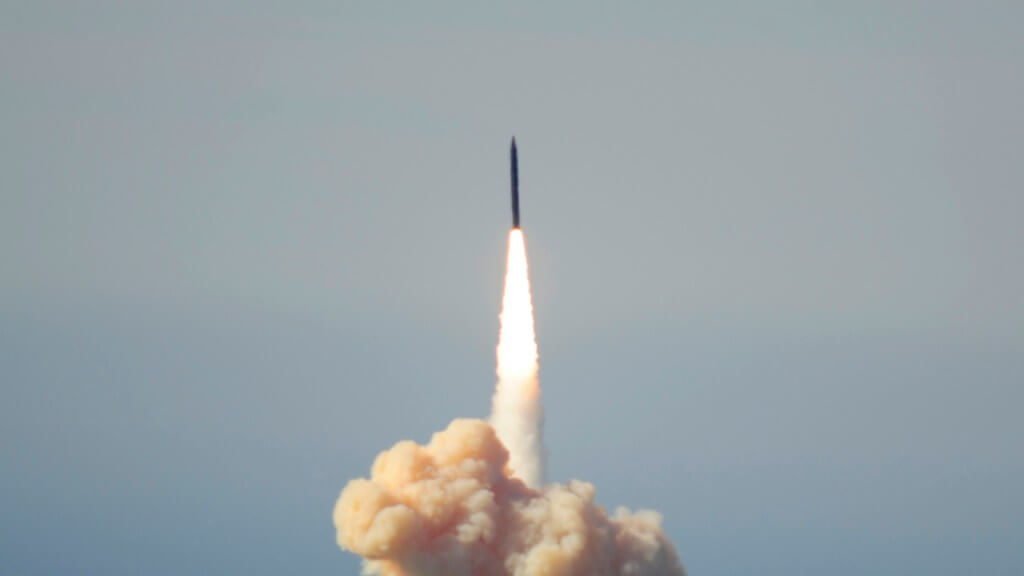The US plans to deploy the Next Generation Interceptor (NGI) against North Korea’s Inter-Continental Ballistic Missiles (ICBMs) two years earlier than expected. During a virtual conference organised by The Heritage Foundation yesterday, Vice Admiral Jon Hill, the director of the US Missile Defence Agency (MDA), said, “The development of the NGI has accelerated, with a targeted deployment in 2028.”
Initially, the NGI was to set be deployed by 2030 and protect the US mainland from a North Korean nuclear attack. A 2019 report released by the Secretary of Defense stressed on a continued and “credible threat” emanating from North Korea, despite the Trump Administration’s attempts at negotiating a peace deal with Kim Jong-un.
Therefore, efforts have continued to make the US homeland defence system more robust by deploying the NGI. At the beginning of this month, Lockheed Martin, along with Boeing and Raytheon-Northrop Grumman, announced that it would compete to build the Maritime Domain Awareness’ (MDA) NGI. Sarah Reeves, Lockheed’s vice president of missile defence programs, said, “We are excited to confirm that we are putting in a bid for the Next-Generation Interceptor.”
In August 2019, Undersecretary of Defence for Research and Engineering Dr Michael Griffin unexpectedly cancelled the Redesigned Kill Vehicle (RKV) effort, and instead proposed the NGI to bolster the US’ homeland defence system. According to MDA’s initial plan, 20 Ground-Based Interceptors (GBIs) were to be equipped with the RKV. However, the Pentagon decided that no more ground-based interceptors would be built for the Ground-based Midcourse Defense System (GMD), and instead focused on NGI to be deployed as part of the GMD system.
Following the cancellation of the RKV programme, Undersecretary Griffin maintained that the money spent on the project was not a “waste”, but rather “went towards the acquisition of knowledge, which will inform our future”. Analysts have opined that such a path could then build the NGI in a block or spiral manner, wherein new components are deployed when they are ready, eventually resulting in a more comprehensive capability.
Last month, President Trump hinted at being open to another face-to-face summit with North Korean dictator Kim Jong Un, saying, “I understand they want to meet, and we would certainly do that.” However, the US envoy to North Korea, Stephen Biegun could not reach any agreement for fresh talks with officials in North Korea. Regarding Beigun’s recent trip, the State Department maintained that the US indicated “readiness to engage in dialogue”, but Pyongyang did not show any interest. In fact, in May this year, the North Korean leader held a meeting with the Central Military Commission to discuss plans to expand the country’s nuclear deterrence. At the meeting, North Korea emphasised on placing its strategic armed forces on “high alert”, which may have contributed to the US accelerating its deployment of NGI.
US to Deploy Next-Generation Interceptor Against North Korea by 2028
The interceptor ostensibly guards against North Korea’s ICBMs.
August 19, 2020

Missile Defense Agency (MDA) flight test of a Ground-based Interceptor (GBI) launches from Vandenberg Air Force Base, in 2016. SOURCE: U.S. AIR FORCE PHOTO BY STAFF SGT. JIM ARAOS
